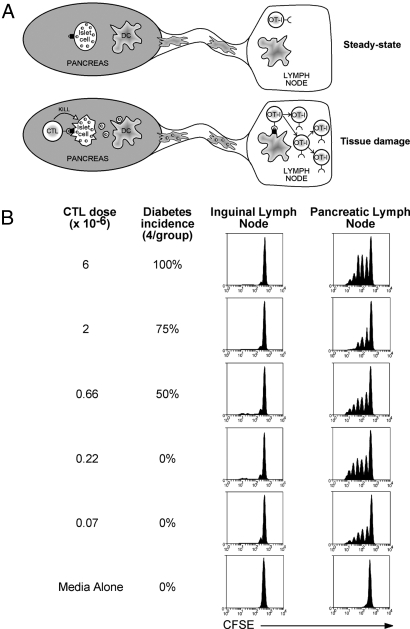Fig. 1.
Low-dose cytotoxic T lymphocytes (CTLs) induce ovalbumin (OVA) presentation without inducing diabetes. (A) The RIP-OVAlo system. In the steady state, insufficient amounts of OVA (small, shaded circles) are captured by antigen-presenting cells (APCs) to cause proliferation of OVA-specific CD8+ T cells (OT-I cells) (Upper). However, the islets still express enough MHC I-OVA peptide on their surface to be targeted by OVA-specific CTLs and this killing event is able to initiate presentation to OT-I cells in the draining pancreatic lymph node (Lower). (B) RIP-OVAlo mice were given graded doses of in vitro activated OT-I CTL intravenously (i.v.) and were monitored for diabetes over a 3-week period to determine the diabetes incidence. In separate experiments, RIP-OVAlo mice injected with equivalent doses of activated CTL were also injected with 2 × 106 CFSE-labeled OT-I cells i.v. 4 days later and then a further 60 h later proliferation was examined by flow cytometry of cells from the draining pancreatic and nondraining inguinal lymph node. Representative data from 3 independent experiments are shown.

